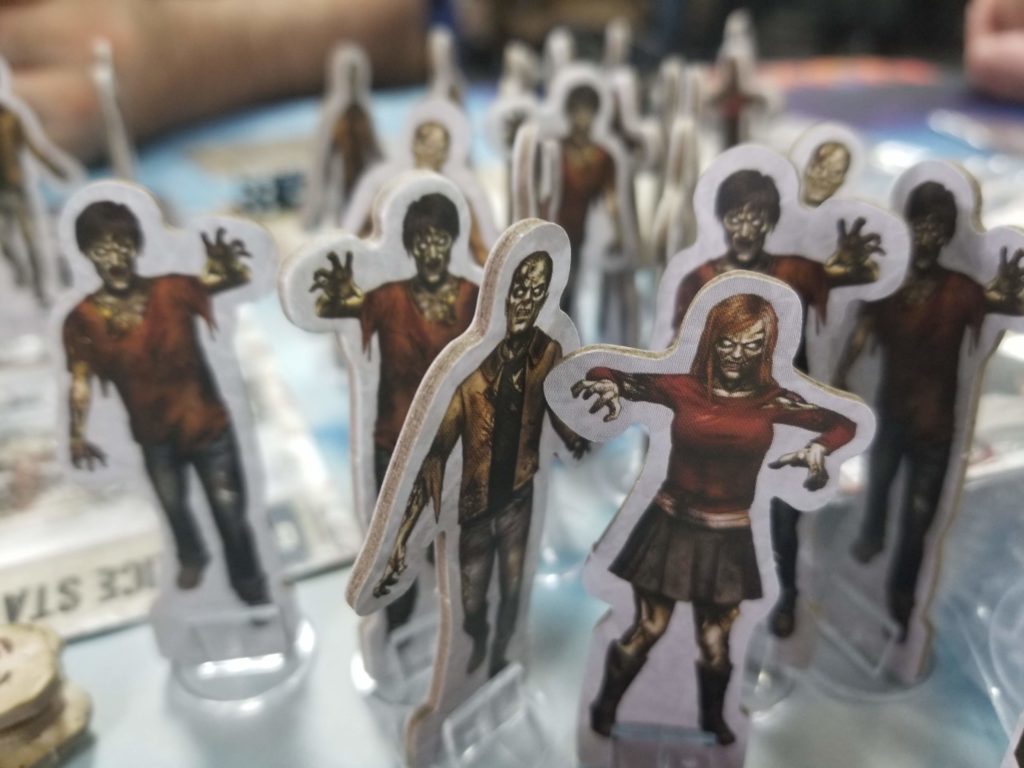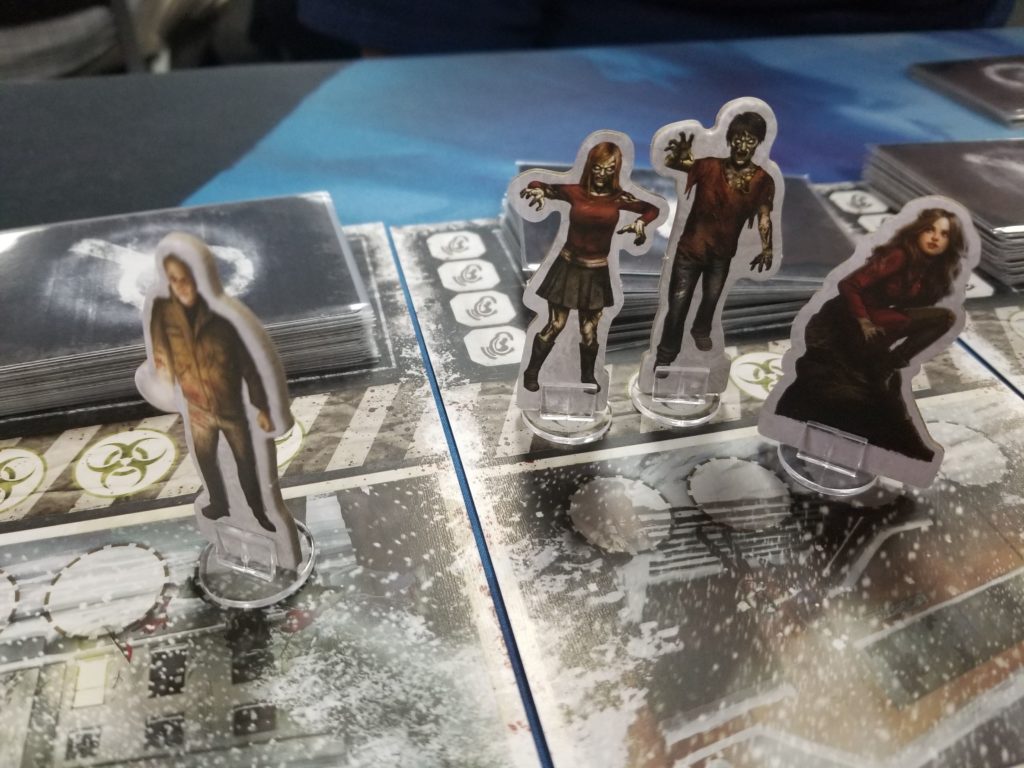Participants
- Andrew – winner
- Mark
- Sean
- Robert
- Brian
Rules missed
- not a misplayed rule, but we did forget that a number of zombies are added to each location equal to the number of survivors at the location at the end of the round – this led to 2 or 3 of Mark’s survivors being “overun” (that’s dead) at the end of one round
BGG clarifications
- none
Photos
About the game
This “mostly-cooperative” game features players as members of a colony of survivors trying to live through winter during a zombie apocalypse. The players will have a shared colony objective detailed on a scenario card, plus each player will have their own secret objective, too. In our game the colony objective was to collect a variable number of dead (re-dead? extra dead?) zombies.
The game is “mostly-cooperative,” because one of the players may have been dealt a betrayal card, which means they will be secretly working against the best interests of the colony. This element means that you can never be to sure of the motivations of the other players, which can lead to suspicion, and sometimes a player being voted out of the colony, which has benefits or penalties based on whether the player exiled was the betrayer or not.
During a turn, each player rolls dice and uses equal to the number of survivors they control +1, and uses those dice to perform actions around the game board. Survivors can travel to locations around the colony, search those locations, battle zombies, use items, clean up the colony, contribute cards to each round’s “crisis,” and more. Many actions can expose players to wounds, frostbite, or dreaded zombie bites. Crossroads cards are an interesting feature of the game. At the beginning of your turn, another player will read a Crossroads card for certain gameplay “triggers.” If, during your turn, you perform actions that trigger the card, it is read out loud, and you, or the other members of the colony will have two or more story choices to make that will affect the game in a variety of ways.
Each scenario has it’s own victory conditions and predetermined number of rounds. The game ends when the victory conditions have been met, the final round is completed, or when colony morale reaches zero (in our game’s case, our morale reached zero, which led to Andrew revealing himself as the betrayer and claiming victory based on his win conditions).
Final Thoughts
This game does a great job of simulating survival in a freezing zombie apocalypse. There is always another crisis to manage, and more and more zombies to deal with. It’s very thematic, and the Crossroads cards provide a bit of story to enhance gameplay. The possibility of a betrayal player creates a great deal of suspicion and tension around the table. It might be best to play this game with people you know well.


